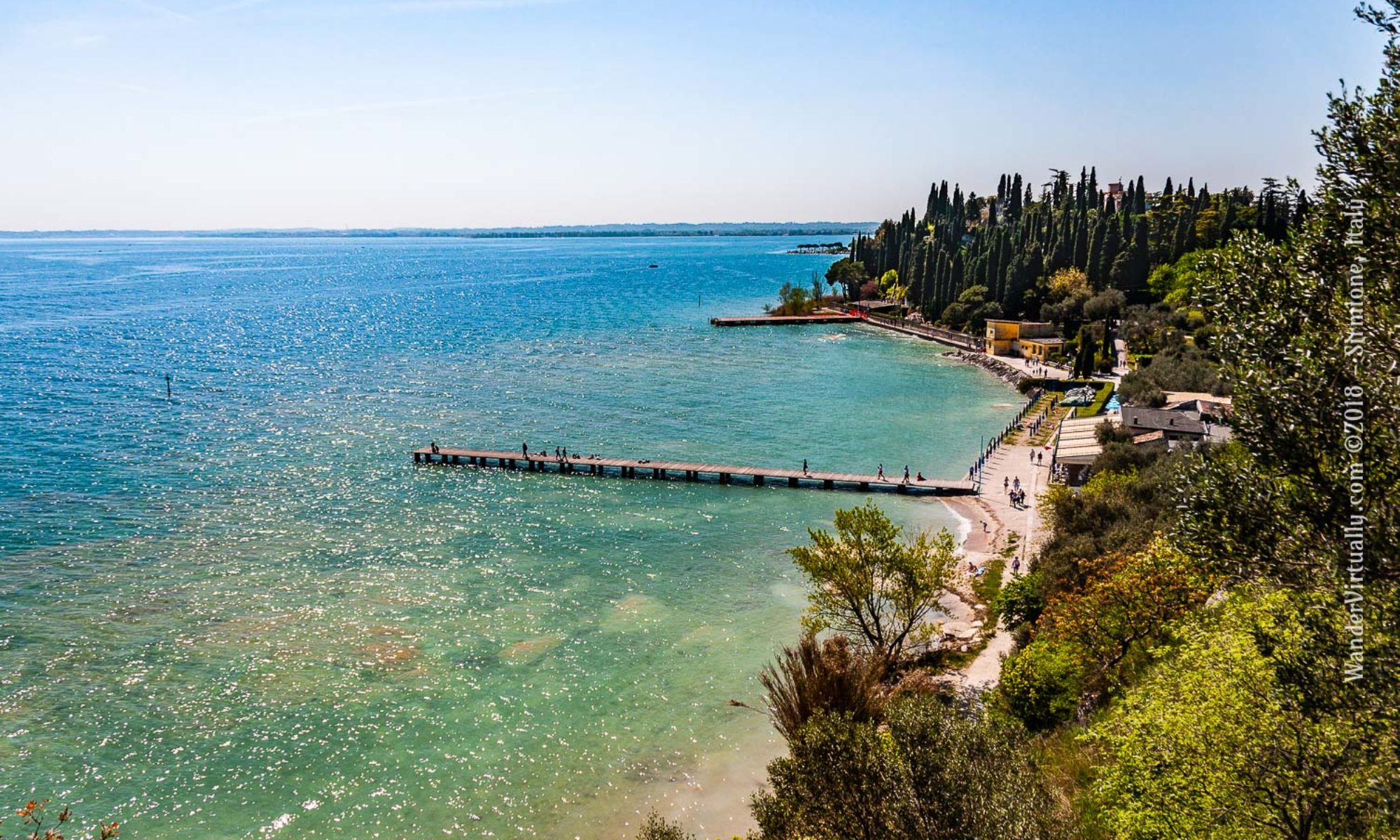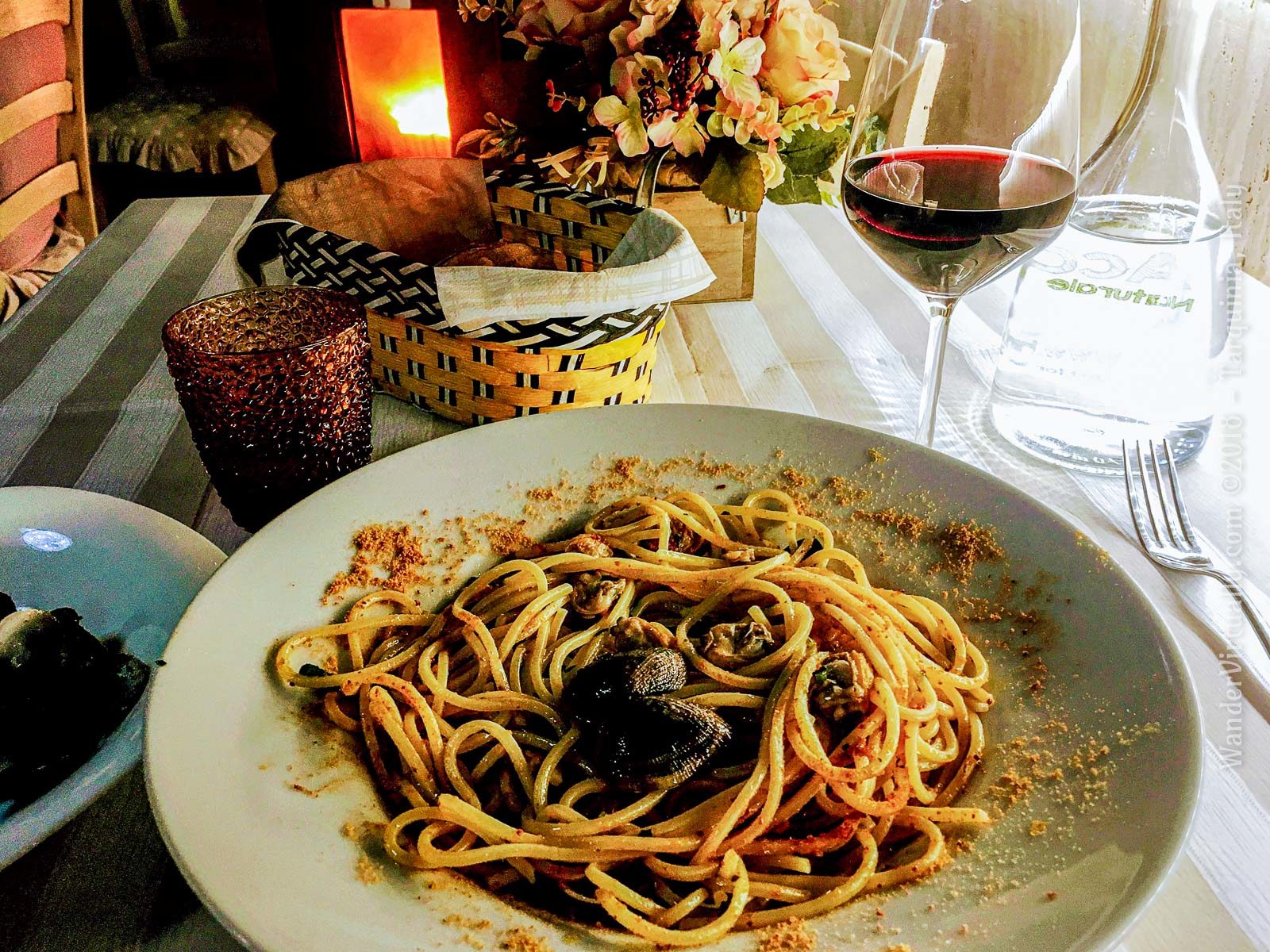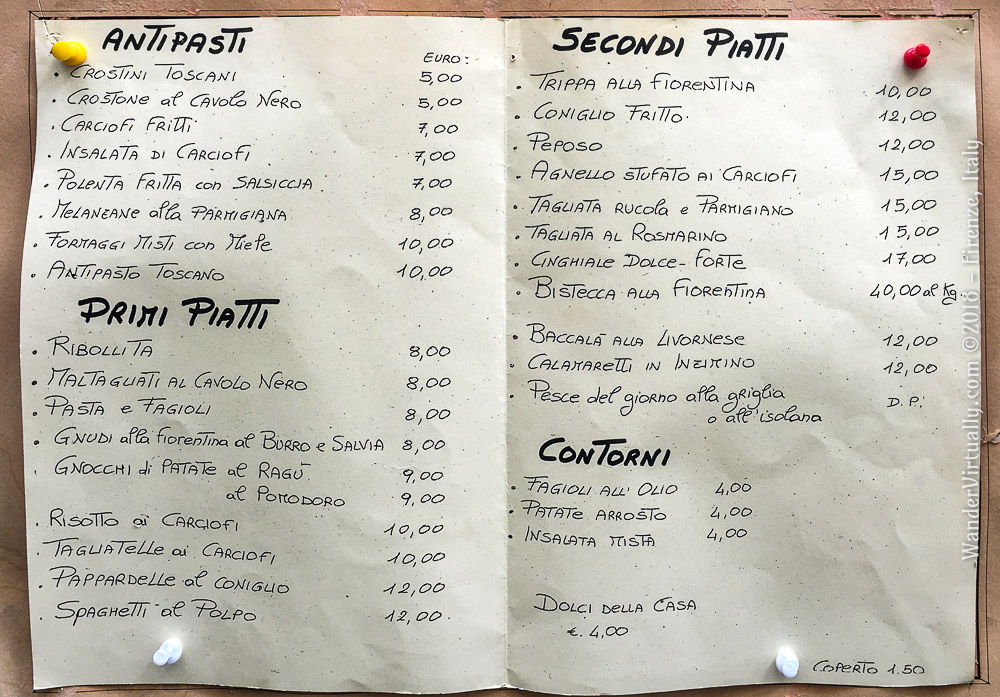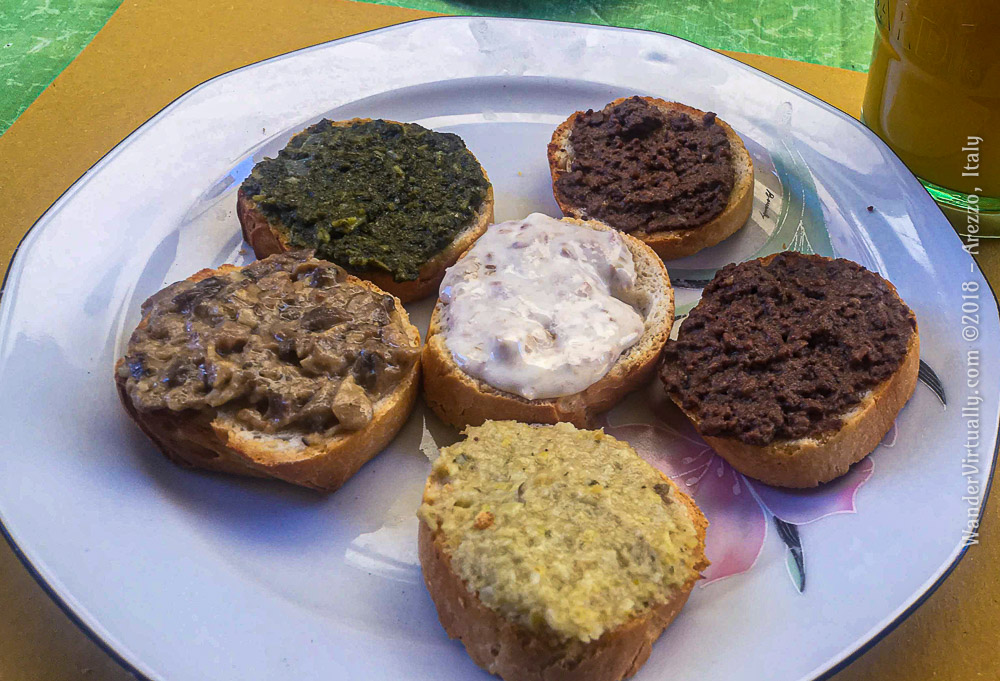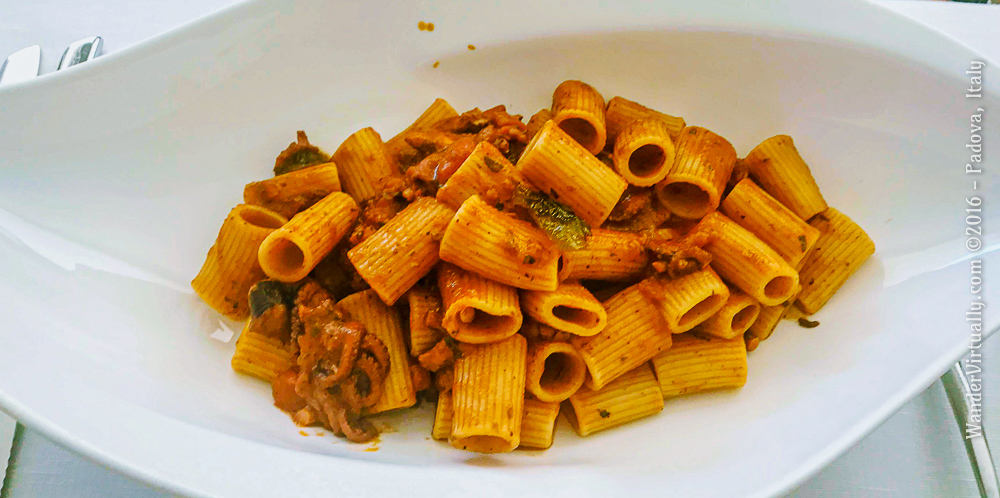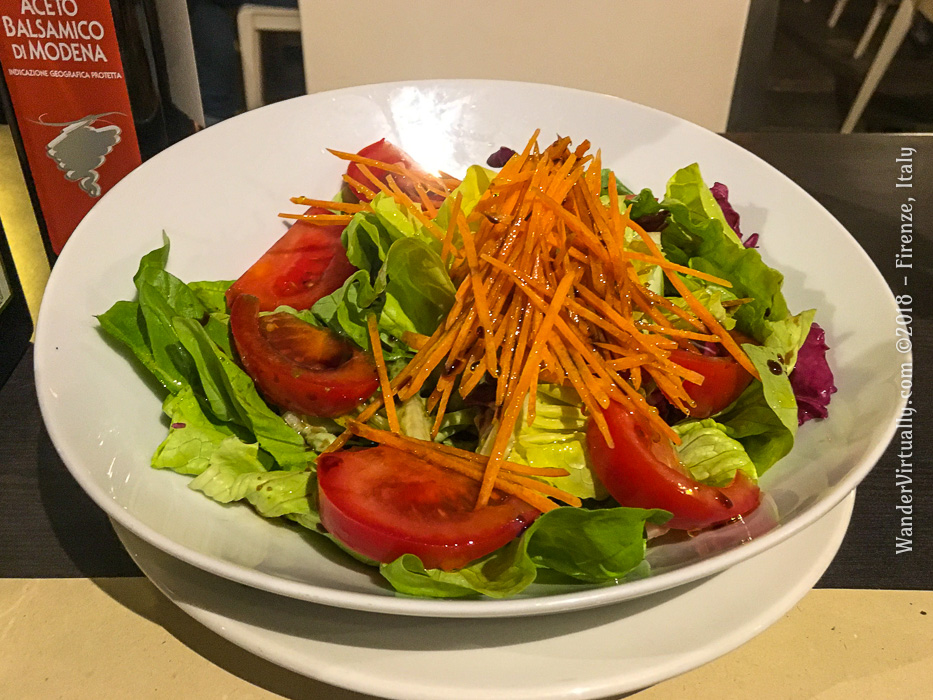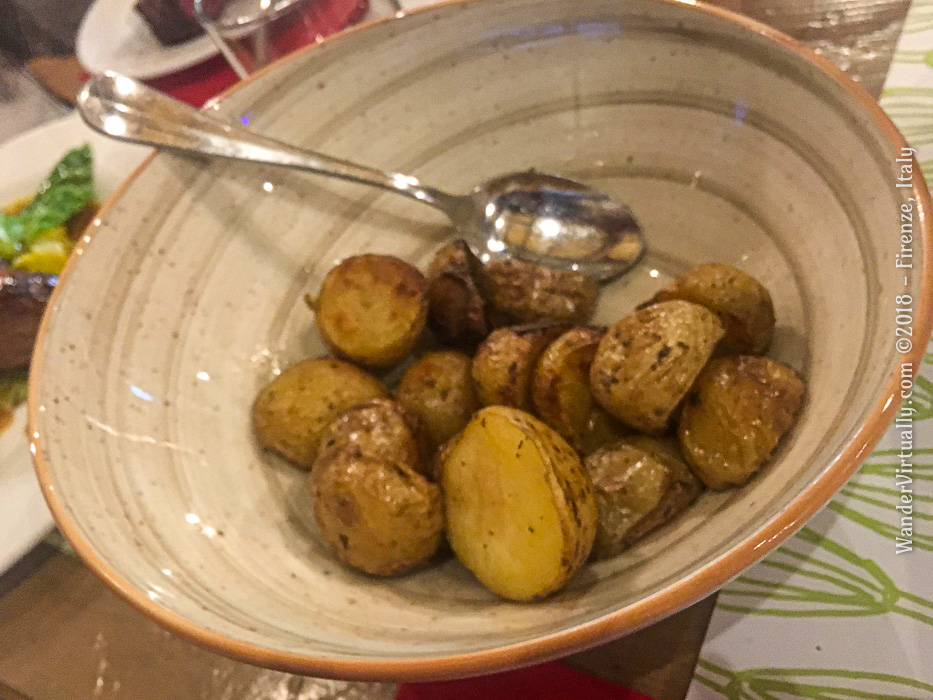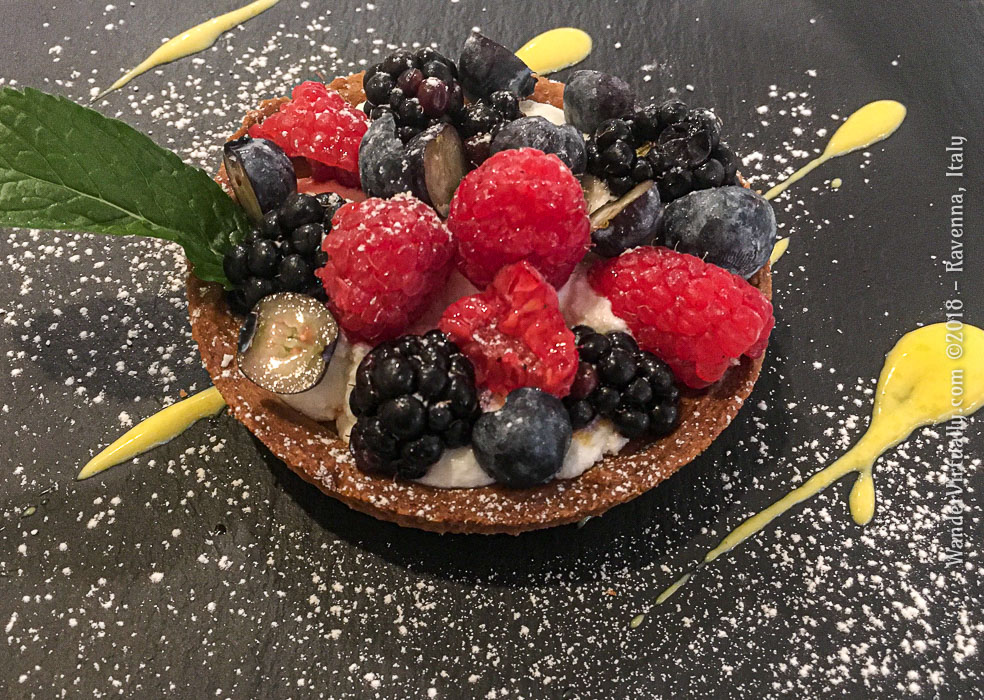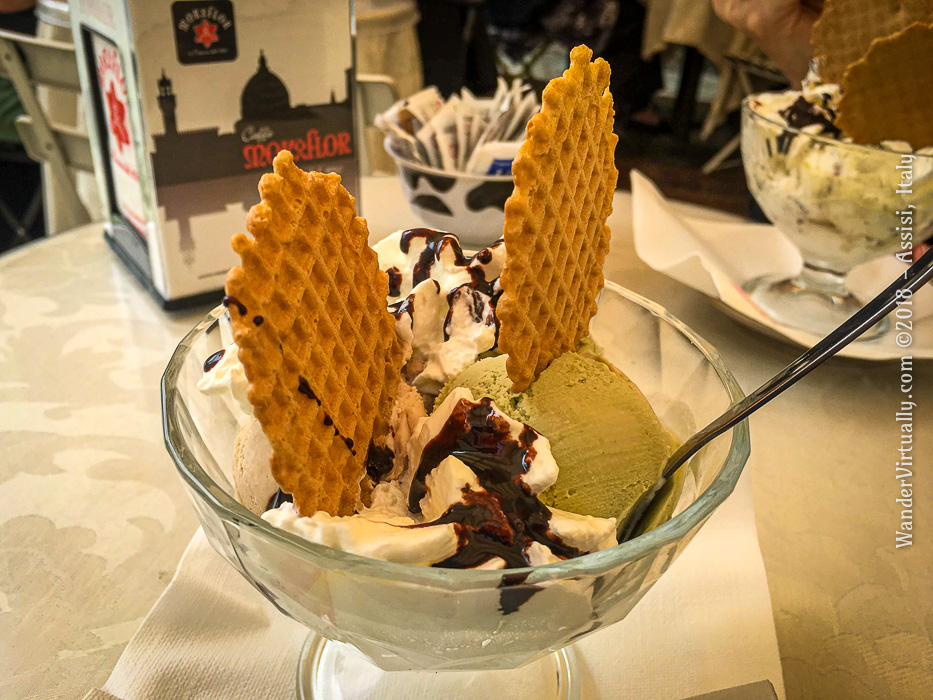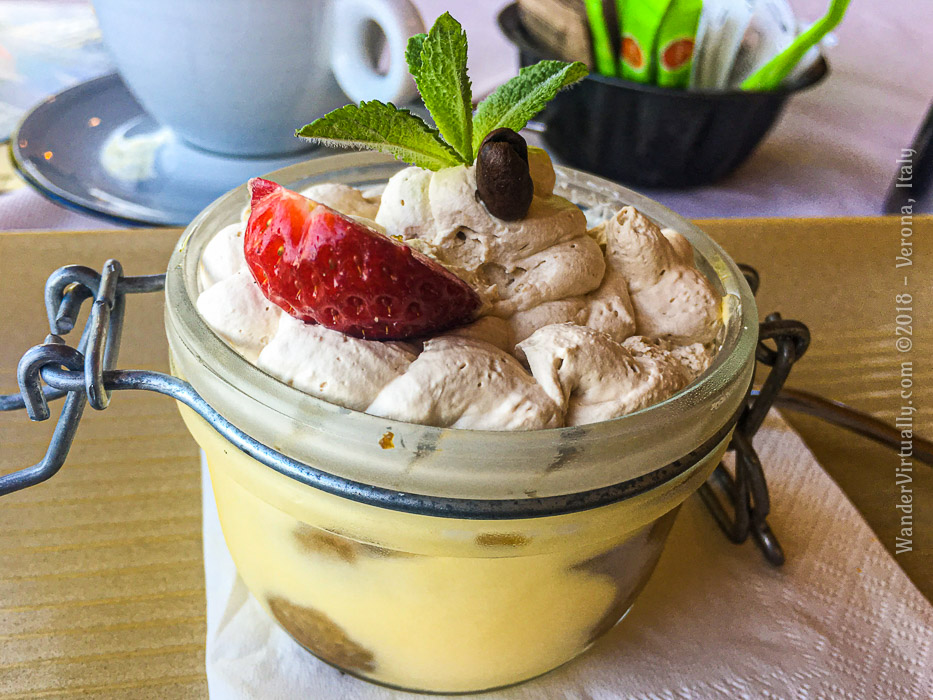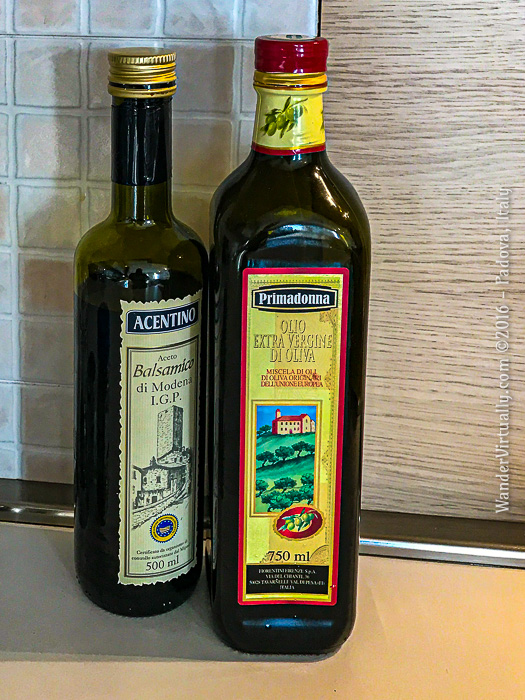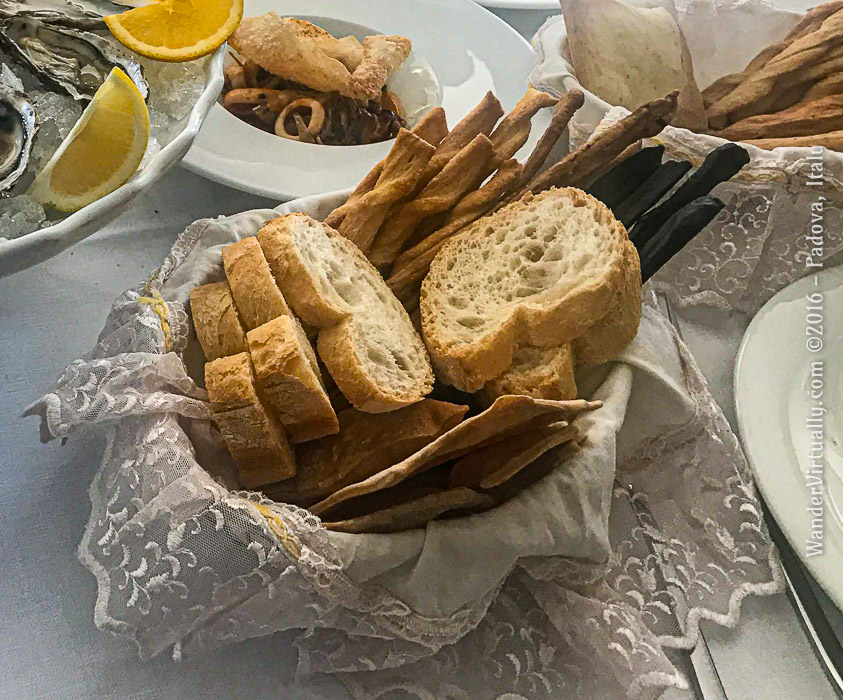Dining at a restaurant in Italy can be daunting when you are handed a long menu with several sections in Italian, like antipasti, primi piatti, secondi piatti, contorni, dolci. What to make of it? Here’s how to navigate the Italian restaurant menu.
Featured photo: A wonderful dinner of spaghetti con vongole e bottarga (spaghetti with clams and fish roe) at Il Pesciolino – a seafood restaurant in Tarquinia, Italy.
The 6 Typical Sections of an Italian Restaurant Menu
The Italian travel experience would not be complete without an immersion in its gustatory delights. You might try the street food, the market food, or even the pizzerias. But to complete your immersion, get a recommendation from a local, if you can, for a restaurant that serves local specialties, preferably away from the touristic hub.
If you can’t get someone to make a recommendation, just try Google’s “restaurants near me” (it does work in Italy). Usually, you’ll get a map and list of eating places with ratings, reviews, menus, etc. You can tell a restaurant must be really good when there are many enthusiastic reviews in Italian – even if you can’t understand them.
Whether it’s an osteria, trattoria, or ristorante, if you decide to dine in a restaurant, the menu can seem daunting. Very often, especially in the less touristic towns, they are in Italian with no English translation. A simple menu structure will typically present you with:
Of course, there may be some variations but these are the most common sections in an Italian restaurant menu. Let’s tackle each section so you’ll know what to expect. Let’s use the menu from Trattoria Dardano in Cortona, as an illustration.
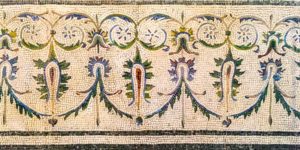
ANTIPASTI [an-ti-PAS-ti] (appetizers)

Antipasto (antipasti, plural) is optional, but it can take the cook some time to prepare your main course – so get some antipasti if you’re already very hungry.
Popular in this category are toasted crostino [kros-TI-noh] (crostini, plural) or bruschetta [brus-KET-tah] (bruschette, plural). These are toasted or grilled bread slices with toppings – crostini are smaller while bruschette are larger.
Bruschetta itself can be a meal – it’s a garlic-rubbed Italian bread brushed with olive oil and often topped with tomato, basil, or other savory topping variations like mushrooms, meat or meat-based spread. Just don’t pronounce it bru-sheta (an American mistake) but brus-KET-tah, and you’ll get a smile of appreciation from your server.
Antipasti can also be cold cuts like salame [sa-LA-meh], prosciutto [pro-SHOOT-toh], mortadella [mor-ta-DEL-lah], with cheeses, olives, and sliced fruits. I ordered this one below, during my stay in Verona last year. If you’re dining solo, this could be your entire dinner!
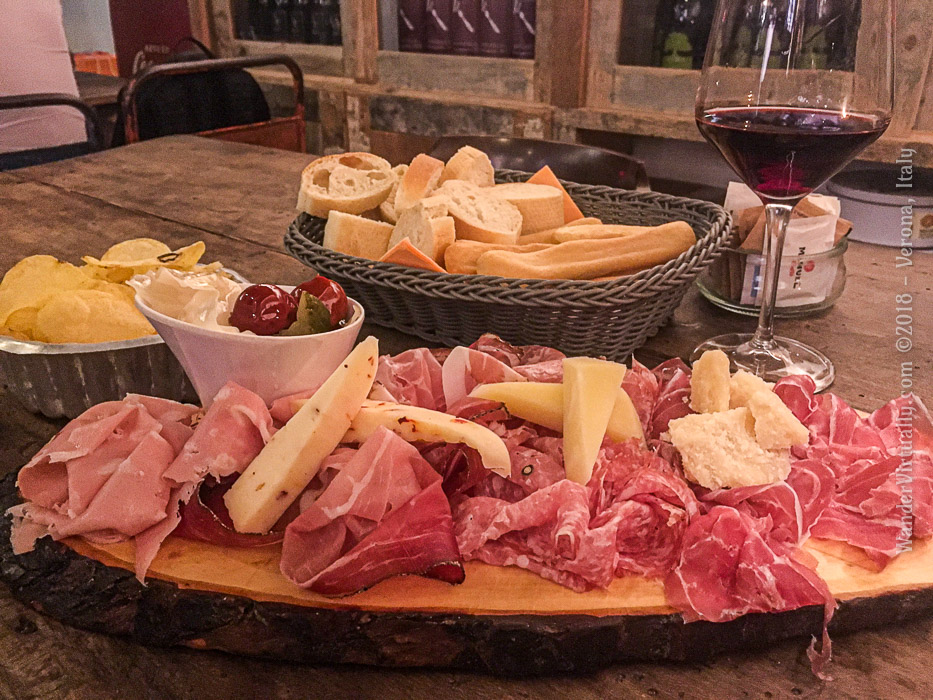
PRIMI PIATTI [pri-mi PYAT-ti] (1st plate, or 1st course)

The usual types of dishes on the primi piatti (a singular dish is primo piatto) list are: minestre [mi-NES-treh] (soups thickened with beans, rice or pasta), zuppa [ZOOP-pah] (brothy soups with bread), risotto [ri-SOT-toh] (rice usually cooked in a savory sauce like mushrooms or seafood), and of course the omnipresent pasta.
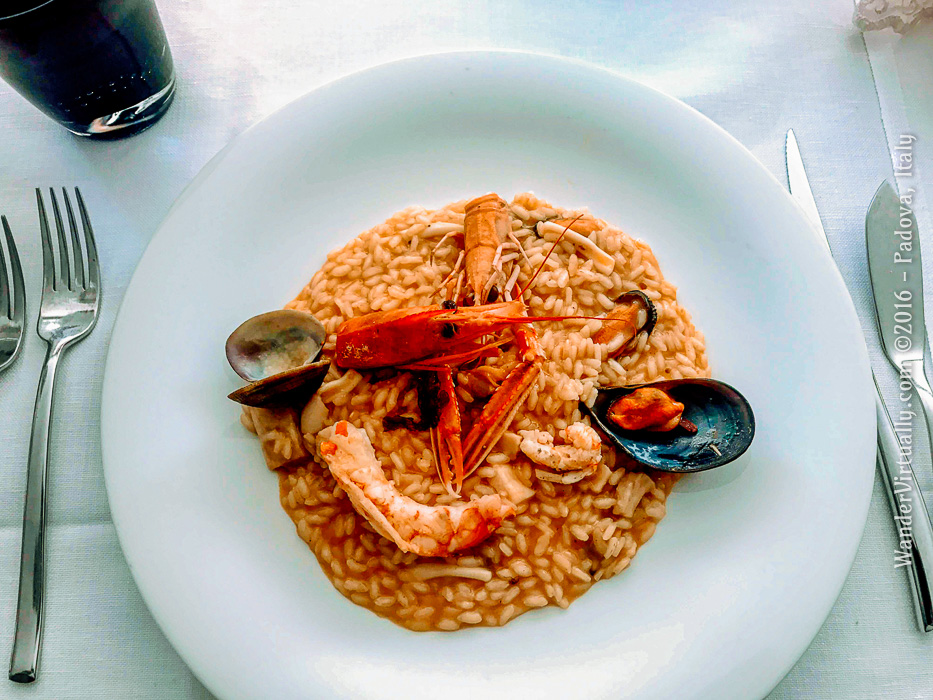
A warning about pasta: beyond the familiar spaghetti, fettucini, and lasagna – there are literally, dozens and dozens of different pasta varieties in Italy. So, be adventurous and order something unfamiliar! Or ask the server to recommend pasta that is unique to the region.
SECONDI PIATTI [se-KON-di PYAT-ti] (2nd plate, or 2nd course)

The secondo piatto (secondi piatti, plural) is the main course, and can be a dish of pesce [PE-sheh] (fish) or carne [KAR-neh] (meat) such as:
- Maiale [ma-YA-leh] = pork
- Manzo [MAN-zoh] = beef
- Pollo [POL-loh] = chicken
- Vitello [vi-TEL-loh] = veal
- Agnello [an-YEL-loh] = lamb
- Cinghiale [ching-GYA-leh] = wild boar
- Coniglio [ko-NIL-yoh] = rabbit
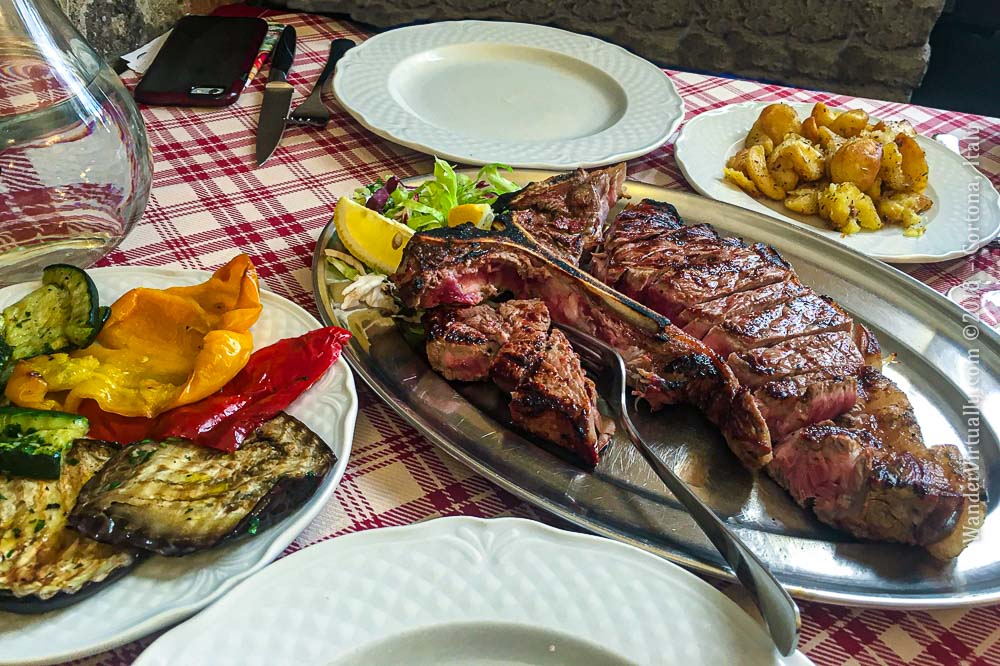
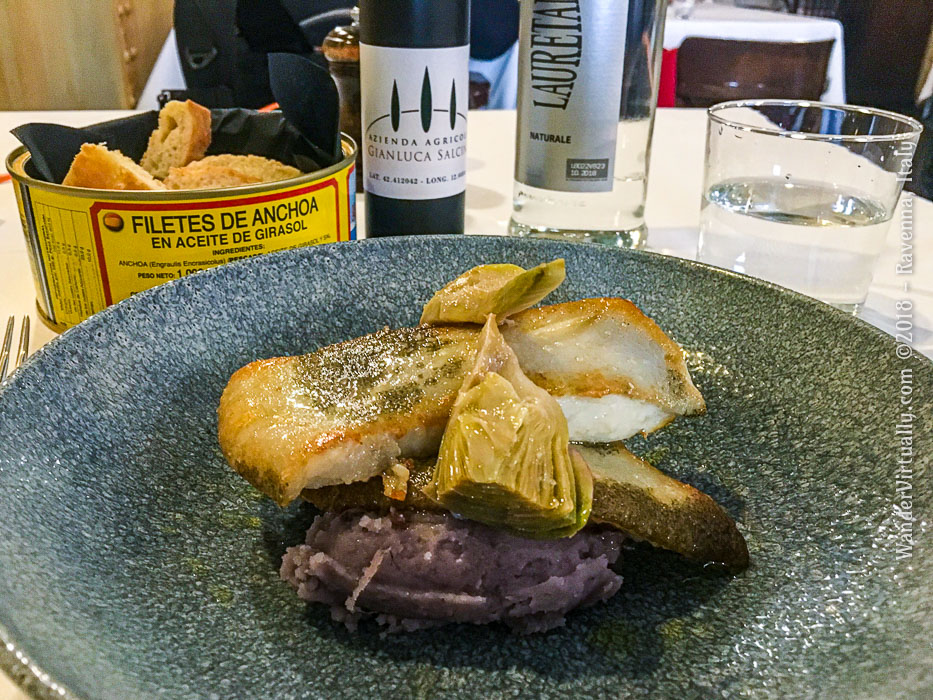
Seafood dishes may sometimes be on a section of their own in Italian restaurant menus, but often they are on the Secondi Piatti section. Seafood dishes may include different kinds of pesce (pesci, plural) and other frutti di mare [FROOT-ti di MA-reh] (fruits of the sea) such as:
- Polpo [POL-poh] = octopus
- Gamberi [GAM-be-ri] = prawns
- Gamberetti [gam-be-RET-ti] = shrimps
- Calamari [ka-la-MA-ri] = squid
- Cozze [KOT-zeh] = mussels
- Vongole [VONG-go-leh]= clams
If you are in a coastal town like Venice, you must try the crudo [KROO-doh] (crudi, plural) or raw restaurant offerings. Frutti di mare crudi are dishes which showcase the sweet taste of fresh seafood, simply embellished with olive oil, salt, and lemon.
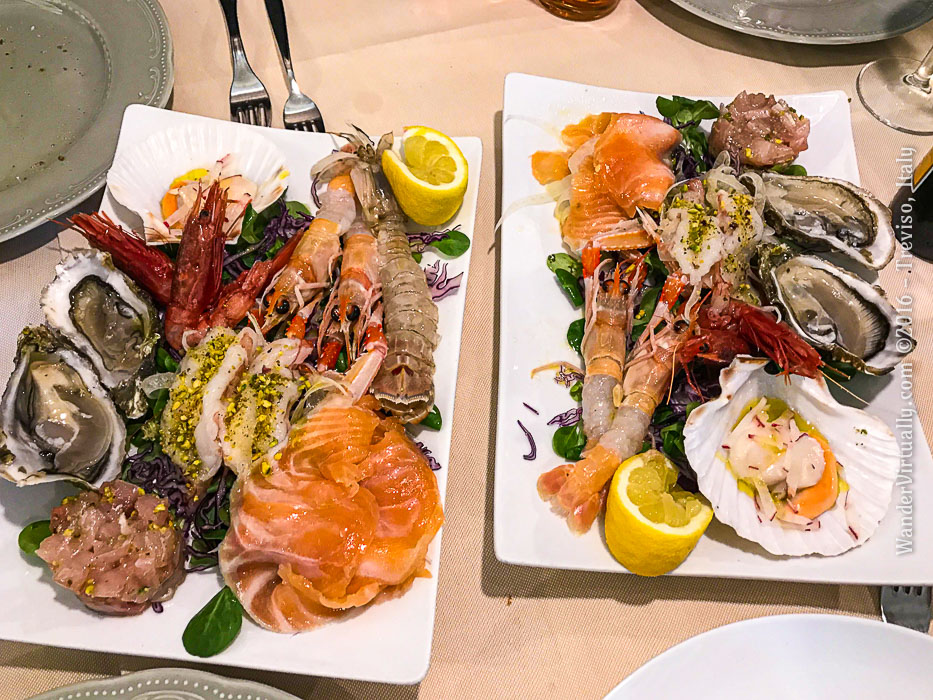
CONTORNI [kon-TOR-ni] (side dishes)

These are smaller vegetable dishes like insalate [in-sa-LA-teh] that are served together with the secondo piatto.
DOLCI [DOL-chi] (desserts)

The sweet stuff for after meals, dolci [DOL-chi] can range from gelato [je-LA-to] (ice cream), mascarpone [mas-kar-PO-neh] (a sweet creamy cheese pudding), to a variety of torta [TOR-tah] (cake) and crostata [kros-TA-tah] (tart). Tiramisu [ti-ra-MI-soo] (an invention from northern Italy) is a menu staple.
BEVANDE [be-VAN-deh] (drinks)
Italians prefer wine to accompany their meals. Many Italian towns produce their own vino [VEE-noh] (wine) – from the northern towns near the Alps, to the southern tip of the Italian peninsula – and it’s a good idea to ask the server for his/her local wine recommendation to accompany your meal.
After meals the server may offer you a caffè and suggest a bitter or sweet digestive liquor drink like amaro, grappa or limoncello. They have high alcohol content and are supposed to help with digesting that heavy meal you just had.
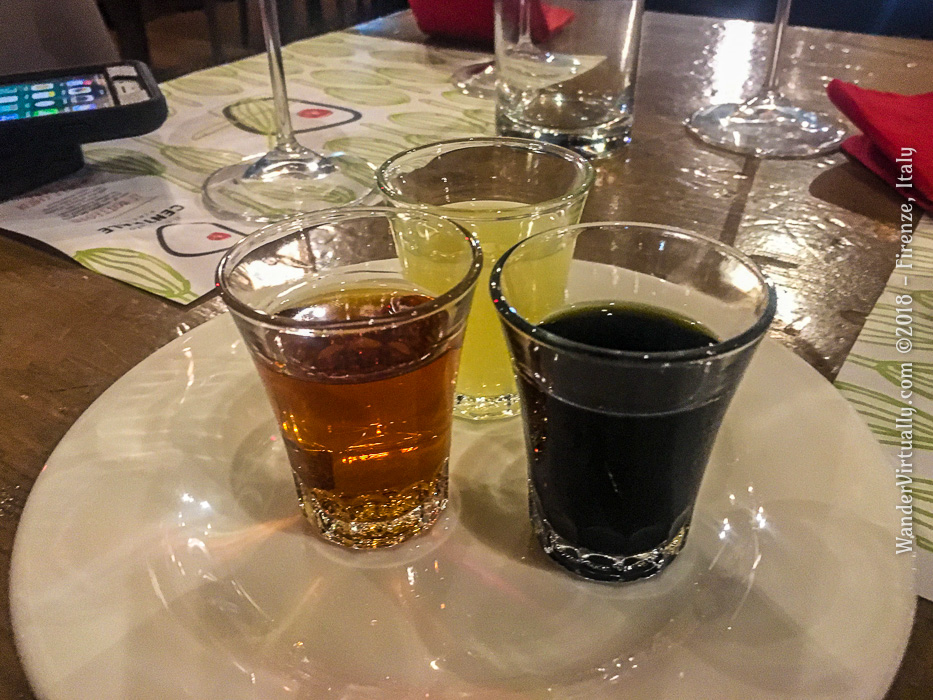
If you prefer water with your meals, note that water is not usually free. They are typically served in carafes or reusable glass bottles with stoppers. For plain or non-fizzy water, ask for acqua naturale [AK-wa na-tu-RA-leh]. For fizzy or bubbly water: acqua frizzante [AK-wa frit-ZAN-teh] or acqua gassata [AK-wa gas-SA-tah].
Dining Tips
In summary, when Italians are having a full meal, they start with antipasti, then a primo piatto of soup, pasta, or rice, then a secondo piatto of meat or fish, and end with a dolci, caffè or digestivo.
So, that said, if you prefer a simple lunch or dinner – order what pleases you. It is perfectly alright to just order a dish from either the Primi Piatti or Secondi Piatti list if you are not very hungry.
I’ve often made a meal out of 1 or 2 antipasti, or just a secondo piatto dish whenever I dined solo – but I never skipped the vino and the dolci.
By the way, an Italian dining table will usually have a bottle of the local olive oil and balsamic vinegar, as well as bread.
Diners consume these before, during, and even after the meal. Often, local diners will use the bread to “clean-off” leftovers and sauce from their plates.
A final tip: Restaurants are usually open for lunch from 12:00-3:00 p.m. They then close for several hours and open again for dinner from 7:00-11:00 p.m. or beyond. In most Italian towns, you’d be hard-pressed to find a restaurant (or any business establishment for that matter) that’s open between 3-7 p.m., except perhaps in tourist-centers like Firenze and Roma. So make sure to plan your lunch or dinner accordingly.

Related Posts
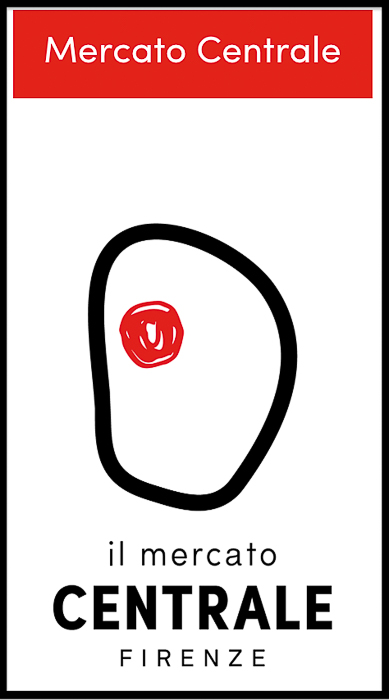
Restaurants aren’t the only places where you can satisfy your gustatory longing for Italian cuisine. Markets are a great place for food finds – check out my post Alternative Dining at the Central Market or “Mercato Centrale”.
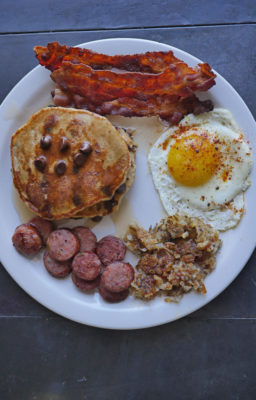
If you’re traveling to Italy, be prepared for what constitutes an Italian breakfast. Don’t go hungry – check my post on Breakfast in Italy.

You don’t have to be Christian or religious to stay at an Italian convent or monastery. Find out if these safe, economical, and peaceful lodgings are right for you.
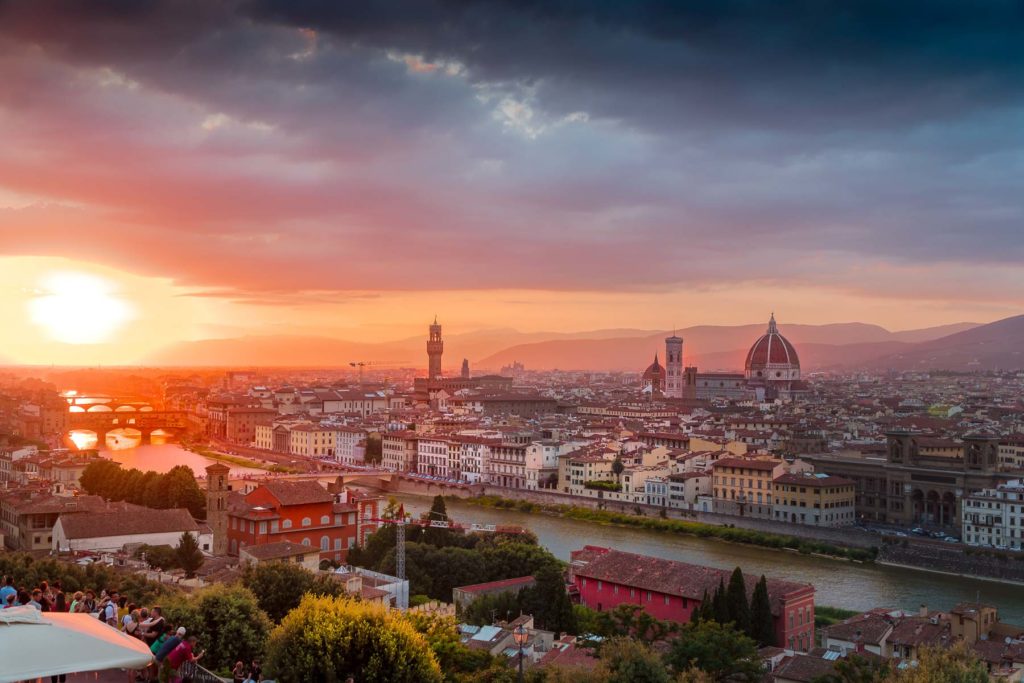
Take this 2-mile Firenze sightseeing walk and watch the sunset over The Florence Skyline from San Miniato al Monte.
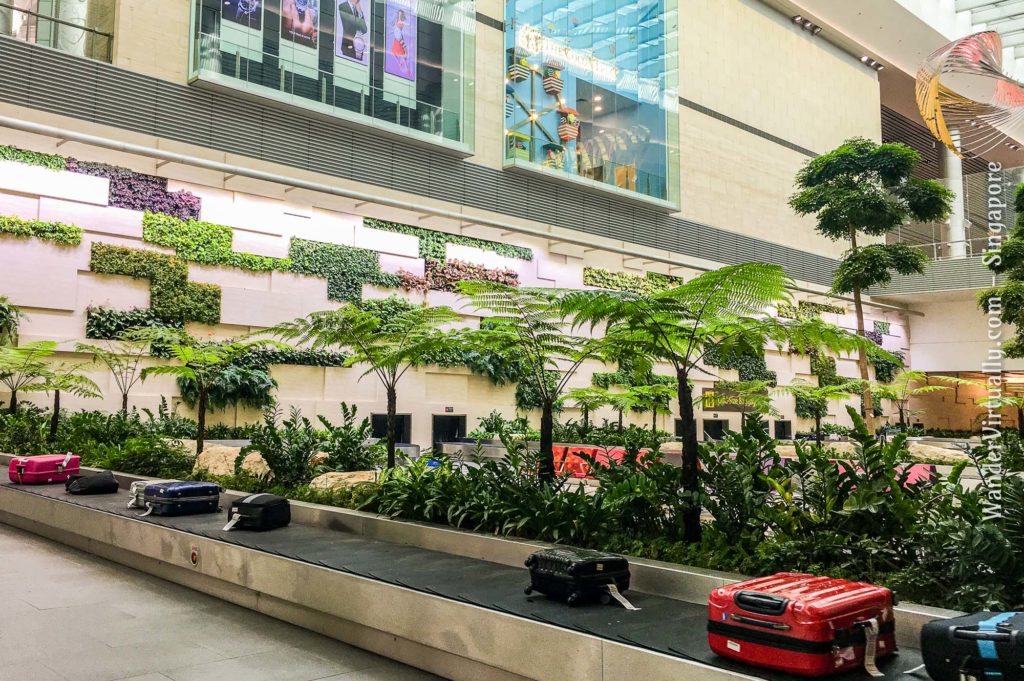
I use simple, inexpensive, but useful tools for travel. Find out what I pack for my trips.
Visit the Italy page for more stories and travel tips …
BELLA ITALIA
Fascinating ancient stories.
Practical travel tales and tips.
